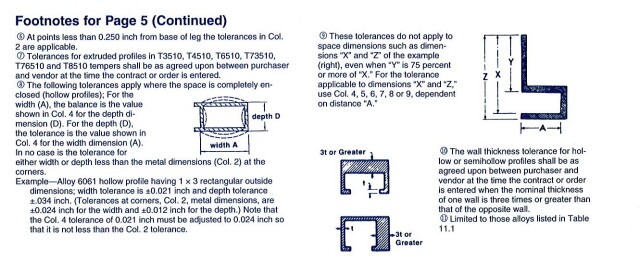As a distributor, it is important that our customers have a clear understanding of the product they are receiving and the associated industry tolerances that go with it. Ensuring that our customers receive high-quality products is essential for maintaining a positive relationship as well as quality reputation, resulting happy customers. One critical aspect of this is ensuring that the products we provide meet the required specifications, including dimensioning and tolerancing.
To ensure that our customers receive products that meet their exact specifications, here are five tips to consider when it comes to dimensioning and tolerancing:
1. Understand the design requirements: Before providing any product to our customer, we make sure together with our customer we have a thorough understanding of their design requirements. The engineering responsibility is that of the customers, but often they do not understand the idiosyncrasies of the extruding process and need a little guidance to the potential pit falls. This starts with a clear understanding of their desired tolerances and any other specifications that may affect the dimensions of the product. The more complicated the extrusion design is, the more complicated the tolerance are to understand. Below is the industry standard tolerances that extrusion mills typically follow. They are referred to as AA tolerances. The chart below does not mean that a mill can’t produce tighter, but it should be assumed that if not indicated on the drawing they are quoting standard AA tolerances. It is the job of the designer to ask for better if needed.

2. Utilize CAD software: Providing the desired shape in a CAD software file like .DWG or .DXF can help ensure that your dimensional measurements are accurate and allow for ease in quoting your finished shape. Minor recommended changes by the extruder for ease of extruding, can easily be made to an existing drawing with the comparison changes to be discussed as options. Having a accepted design in a CAD file is especially important for extrusions, which have intricate geometries that can be difficult to measure accurately by hand on the extruded shape.
Double-check measurements: Once you have laid out the measurements, double-check them to make sure they are correct. This will ensure that your products meet the design requirements and specifications you want.
Verify materials: Be sure to understand the differences in extrusion alloys. Some provide high strength and better machinability but are more difficult to make complex shapes in an extrusion. Other alloys flow better through complex die designs but are not as high of strength. It is important to verify that the alloy in your design meets the strength, corrosion, anodizing, and surface requirements of your end part. Make sure that the material meets these requirements, as well as any industry standards or regulations.
3. Pay attention to surface finish: Often the extruded surface is the finished surface of a part, meaning there is no machining being done to that surface. Producing mills are very sensitive to what they call “exposed surfaces”, meaning not only is the surface not machined, but it is an exposed surface visible on the finished product to the consumer, and must look nice. If the extruder understands which surfaces are exposed, the die can be designed to minimize potential surface imperfections when the extrusion is running out of the extrusion press. The surface finish of a product can also have impact on its dimensions and tolerances. Make sure you understand how important the surface finish is to your finished product. It will save a lot of headaches in the long run.
4. Consider post extruding manufacturing processes: Understanding the manufacturing processes used to create the finished product is important for accurately assessing its dimensions, tolerances, and finished surface condition required. For Example. Many cutoff saws have pneumatic hold down clamps that can put too much pressure on a thin wall of an Aluminum extrusion and potentially crush the metal changing the shape of the part. The same thing can happen in a fixture of a machining center. Make sure you have a thorough understanding of the manufacturing process that will take place on your custom extruded shape and any associated tolerances you need to hold.
5. Communicate clearly with your suppliers: Finally, clear communication with your suppliers is essential for ensuring that the products they provide meet your required specifications. Make sure you provide detailed specifications to your suppliers and have open lines of communication to address any potential issues that may arise.
By following these tips, you can ensure that the custom extruded shapes you purchase will meet your specifications. You will also find that you will look to Aluminum extrusions in the future as a cost-effective design option for saving money by reducing weight, secondary operations, and time. This process requires a custom extrusion partner that will take the time to clarify all these points. Howard Precision Metals is a dedicated Aluminum distributor focused on providing the knowledge and expertise in Aluminum plate, bar, and custom extruded shapes. Contact Howard Precision Metals on your next custom extrusion requirement.


